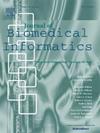Leveraging heterogeneous tabular of EHRs with prompt learning for clinical prediction
IF 4.5
2区 医学
Q2 COMPUTER SCIENCE, INTERDISCIPLINARY APPLICATIONS
引用次数: 0
Abstract
Electronic Health Records (EHRs) depict patient-related information and have significantly contributed to advancements in healthcare fields. The abundance of EHR data provides exceptional opportunities for developing clinical predictive models. However, the heterogeneity within multi-source EHR data raises a difficulty to organically leverage information from structured and unstructured features. In this paper, we focus on the heterogeneous EHR data in the tabular form, and propose a Prompt learning based data Fusion framework for Tabular (TabPF) to extract patient representations for clinical prediction. First, we design a text summary generator module to convert medical tabular into vector representations through long text embedding. Specifically, the tailored prompt learning is conducted for leading the Large Language Model (LLM) to respectively generate appropriate text summaries for different types of tabular data. Second, we design a novel attention mechanism of Transformer to effectively realize heterogeneous data fusion and generate more comprehensive patient representations for downstream predictions. The experiments are performed on the publicly available eICU-CRD dataset and the real-world CECMed dataset containing elderly patients diagnosed with chronic diseases, in comparison with representative baseline models. The results validate the superior performance of TabPF in predicting severity, mortality and Length of Stay (LoS). Furthermore, extensive ablation study and model variants evaluations demonstrate the effectiveness of the key component of the proposed framework.

利用异质表格的电子病历与快速学习临床预测
电子健康记录(EHRs)描述了与患者相关的信息,并为医疗保健领域的进步做出了重大贡献。丰富的电子病历数据为开发临床预测模型提供了绝佳的机会。然而,多源电子病历数据的异质性给从结构化和非结构化特征中有机地利用信息带来了困难。本文以表格形式的异构电子病历数据为研究对象,提出了一种基于快速学习的表格数据融合框架(TabPF),提取患者表征用于临床预测。首先,我们设计了一个文本摘要生成器模块,通过长文本嵌入将医学表格转换为向量表示。具体来说,就是进行量身定制的提示学习,引导大语言模型(Large Language Model, LLM)针对不同类型的表格数据分别生成合适的文本摘要。其次,我们设计了一种新的Transformer注意机制,有效地实现异构数据融合,为下游预测生成更全面的患者表征。实验是在公开可用的eICU-CRD数据集和包含诊断为慢性疾病的老年患者的现实世界CECMed数据集上进行的,并与代表性基线模型进行比较。结果验证了TabPF在预测严重程度、死亡率和住院时间(LoS)方面的优越性能。此外,广泛的消融研究和模型变量评估证明了所提出框架的关键组成部分的有效性。
本文章由计算机程序翻译,如有差异,请以英文原文为准。
求助全文
约1分钟内获得全文
求助全文
来源期刊

Journal of Biomedical Informatics
医学-计算机:跨学科应用
CiteScore
8.90
自引率
6.70%
发文量
243
审稿时长
32 days
期刊介绍:
The Journal of Biomedical Informatics reflects a commitment to high-quality original research papers, reviews, and commentaries in the area of biomedical informatics methodology. Although we publish articles motivated by applications in the biomedical sciences (for example, clinical medicine, health care, population health, and translational bioinformatics), the journal emphasizes reports of new methodologies and techniques that have general applicability and that form the basis for the evolving science of biomedical informatics. Articles on medical devices; evaluations of implemented systems (including clinical trials of information technologies); or papers that provide insight into a biological process, a specific disease, or treatment options would generally be more suitable for publication in other venues. Papers on applications of signal processing and image analysis are often more suitable for biomedical engineering journals or other informatics journals, although we do publish papers that emphasize the information management and knowledge representation/modeling issues that arise in the storage and use of biological signals and images. System descriptions are welcome if they illustrate and substantiate the underlying methodology that is the principal focus of the report and an effort is made to address the generalizability and/or range of application of that methodology. Note also that, given the international nature of JBI, papers that deal with specific languages other than English, or with country-specific health systems or approaches, are acceptable for JBI only if they offer generalizable lessons that are relevant to the broad JBI readership, regardless of their country, language, culture, or health system.
 求助内容:
求助内容: 应助结果提醒方式:
应助结果提醒方式:


